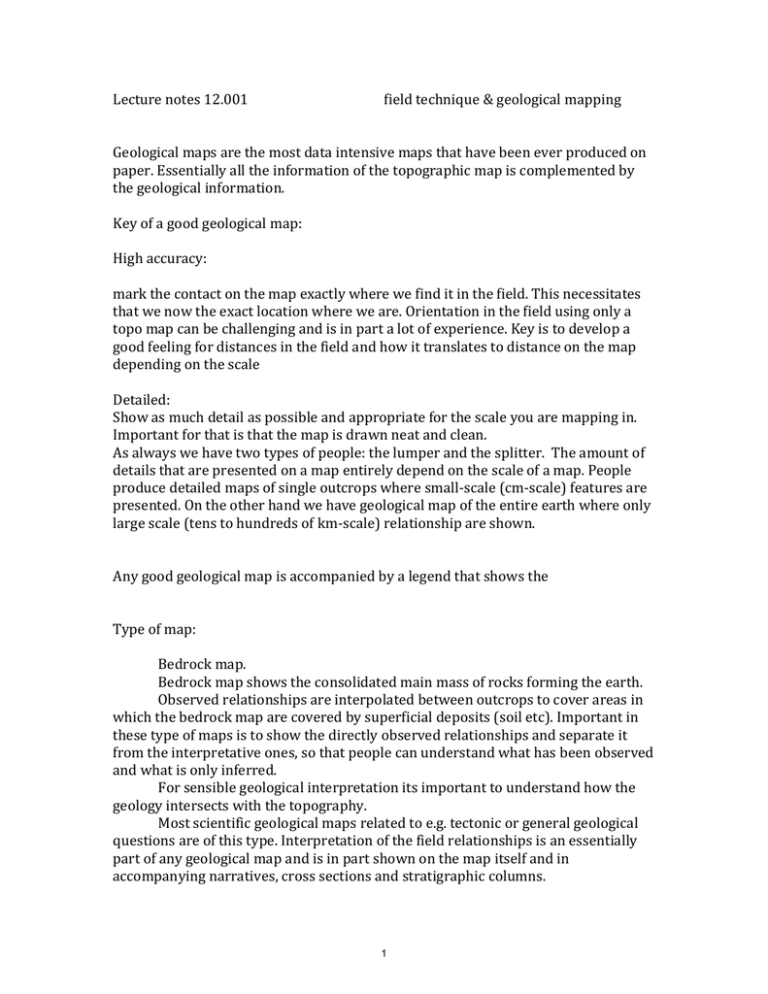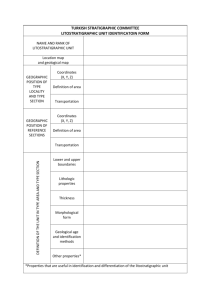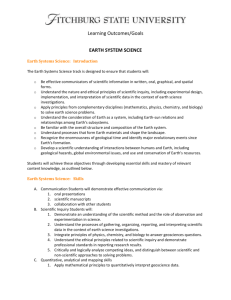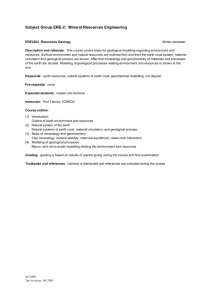Lecture notes 12.001 field technique & geological mapping
advertisement

Lecture notes 12.001 field technique & geological mapping Geological maps are the most data intensive maps that have been ever produced on paper. Essentially all the information of the topographic map is complemented by the geological information. Key of a good geological map: High accuracy: mark the contact on the map exactly where we find it in the field. This necessitates that we now the exact location where we are. Orientation in the field using only a topo map can be challenging and is in part a lot of experience. Key is to develop a good feeling for distances in the field and how it translates to distance on the map depending on the scale Detailed: Show as much detail as possible and appropriate for the scale you are mapping in. Important for that is that the map is drawn neat and clean. As always we have two types of people: the lumper and the splitter. The amount of details that are presented on a map entirely depend on the scale of a map. People produce detailed maps of single outcrops where small-scale (cm-scale) features are presented. On the other hand we have geological map of the entire earth where only large scale (tens to hundreds of km-scale) relationship are shown. Any good geological map is accompanied by a legend that shows the Type of map: Bedrock map. Bedrock map shows the consolidated main mass of rocks forming the earth. Observed relationships are interpolated between outcrops to cover areas in which the bedrock map are covered by superficial deposits (soil etc). Important in these type of maps is to show the directly observed relationships and separate it from the interpretative ones, so that people can understand what has been observed and what is only inferred. For sensible geological interpretation its important to understand how the geology intersects with the topography. Most scientific geological maps related to e.g. tectonic or general geological questions are of this type. Interpretation of the field relationships is an essentially part of any geological map and is in part shown on the map itself and in accompanying narratives, cross sections and stratigraphic columns. 1 Superficial map (outcrop map) Alternative the map can show the exposed type of rocks only where they are truly exposed, the area covered by superficial deposits (soil etc) are shown as separated map units. In this types of maps little interpretation is shown on the map itself and it essentially represents the most accurate representation of a the earth surface. These types of maps are important for engineer proposes such as road construction and hydrological application etc. Mapped units: The decision which units to separate out depend (A) on the scale of the map and (B) on the question that is addressed. We have seen maps in class that showed tectonic units that are composed of highly different lithologies but have a common tectonic history. Alternative a map can show lithology separated by age (see hand out for symbols) or the lithology observed in the field (i.e. sandstone, lime stone, granite etc). Structure: For other persons reading your map it is important to add as much information as necessary to it so that they can understand it. Crucial for most scientific and economic application is the structure of an area. Where are folds and faults etc.? To show the orientation of structures its important to show the dip of certain units (lithological beds or fault surface orientation etc). To orient a surface in the 3D we measure two lines on the plane. We measure the strike and the dip whereby we follow the right hand rule. Interpretation Cross section Essential to understand the geological relationship is to have accompanying cross sections. We can construct those based on our field observations but cross sections also include a lot of interpretation. These are best shown by dashed lines etc. Cross sections are essential to understand the geological history and geometrical relationship of an area. For example in the field it is very difficult to constrain the true thickness of a unit. We map only apparent thickness of units and only when we construct detailed cross section can we illustrate the true thickness of the units we mapped. From the true thickness of the units and our inferred age relationship between them we can construct a stratigraphic column, where we show the thickness of each unit, the contact relationship between them and their grain size. All the information and your own thoughts are than put together in a narrative, which has as well a descriptive part describing e.g. the units you mapped and their characteristics (rock type, weathering color, grains size variation etc.) and 2 a interpretative part of age relationships and some information on how you think the field relationships can be explained by a “geological story” 3 MIT OpenCourseWare http://ocw.mit.edu 12.001 Introduction to Geology Fall 2013 For information about citing these materials or our Terms of Use, visit: http://ocw.mit.edu/terms.





